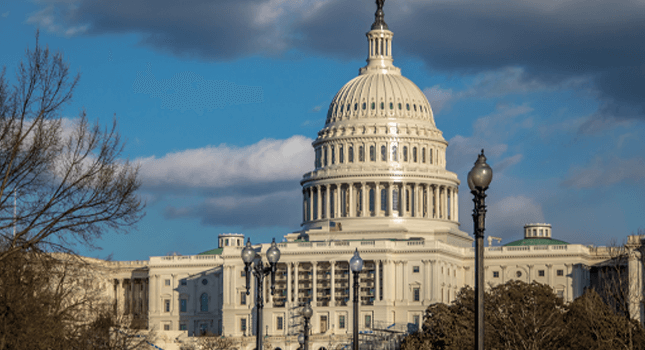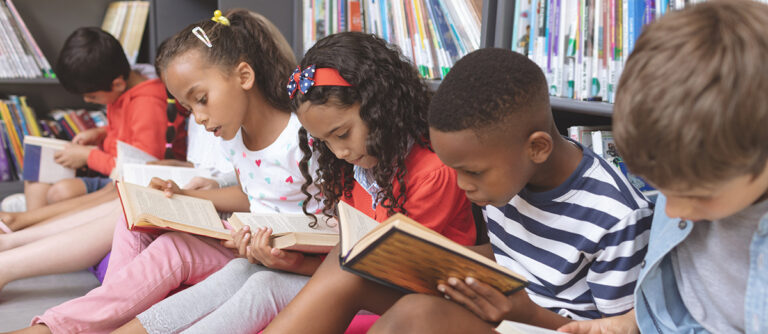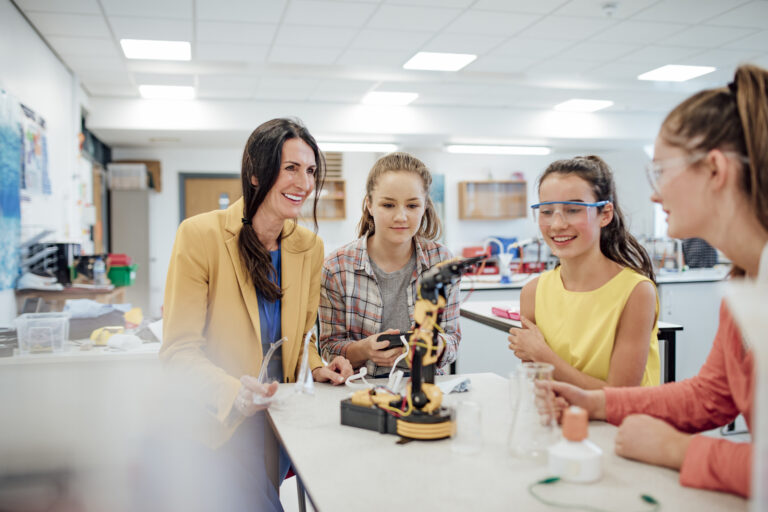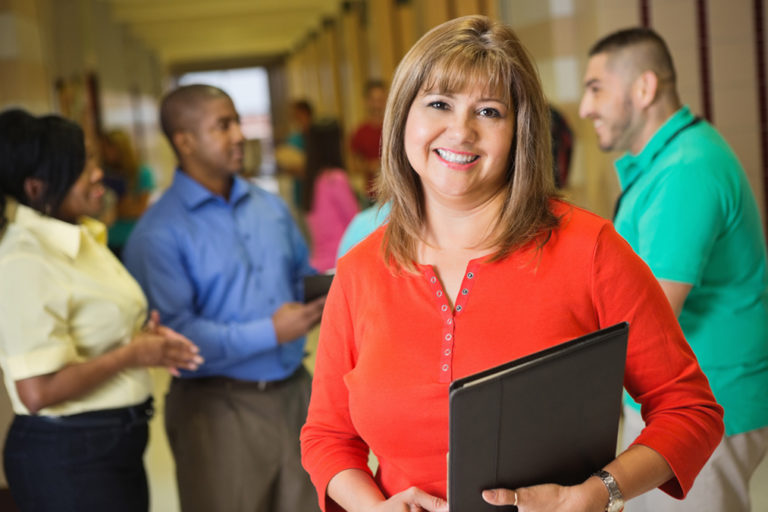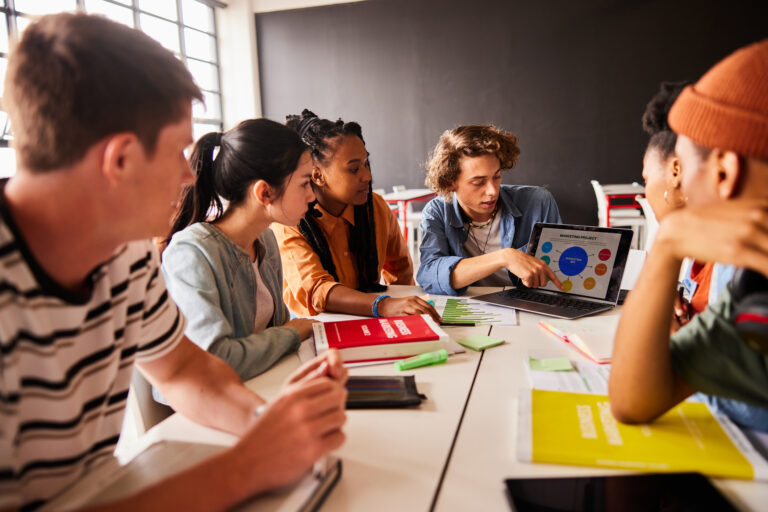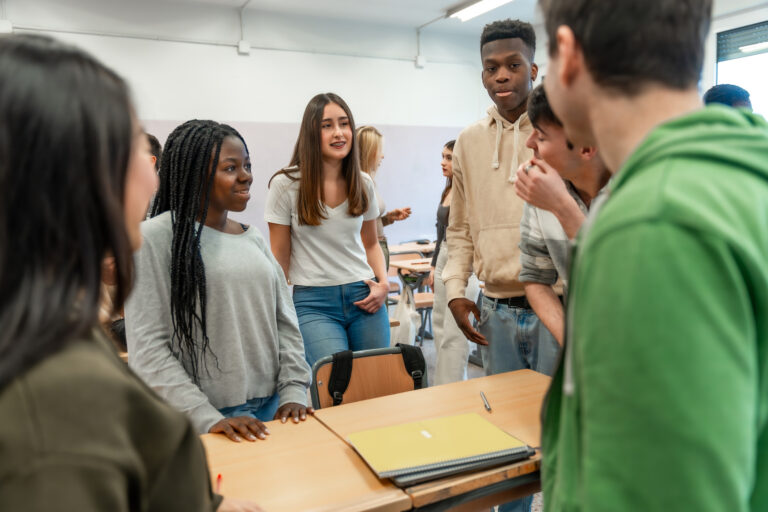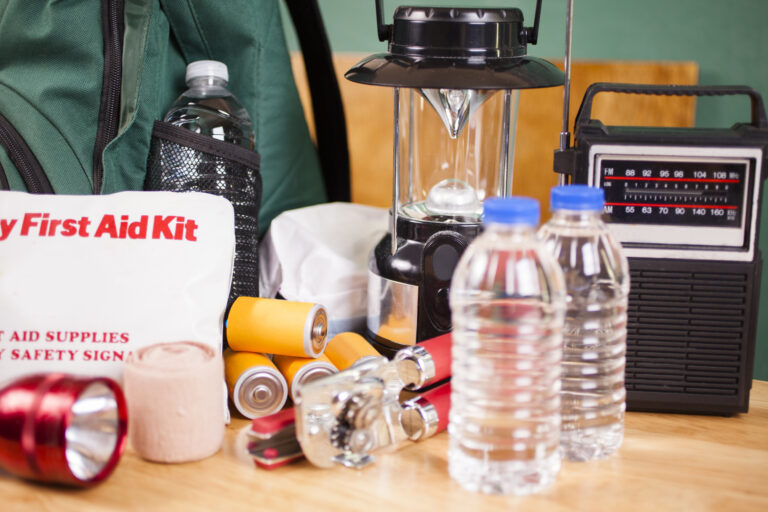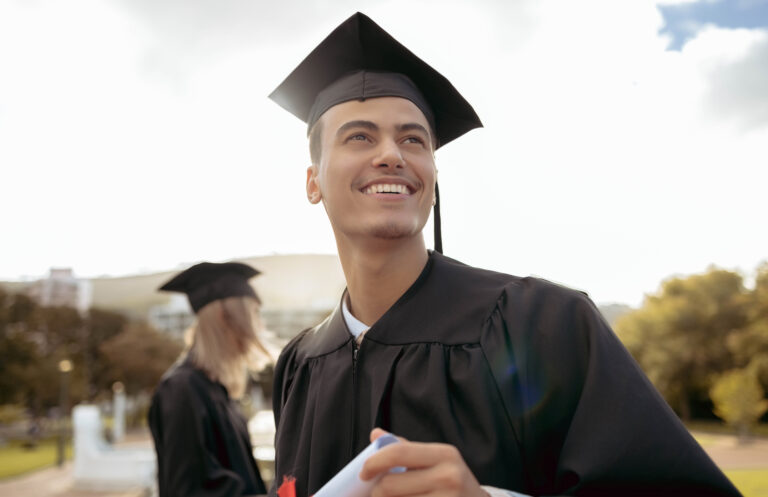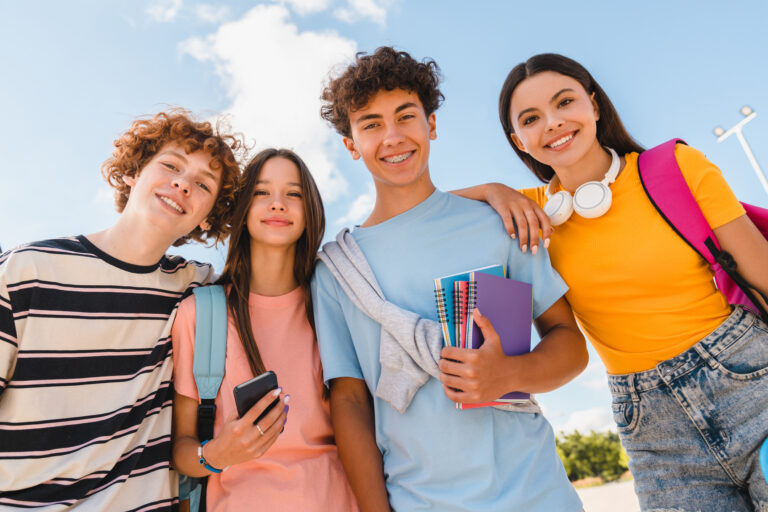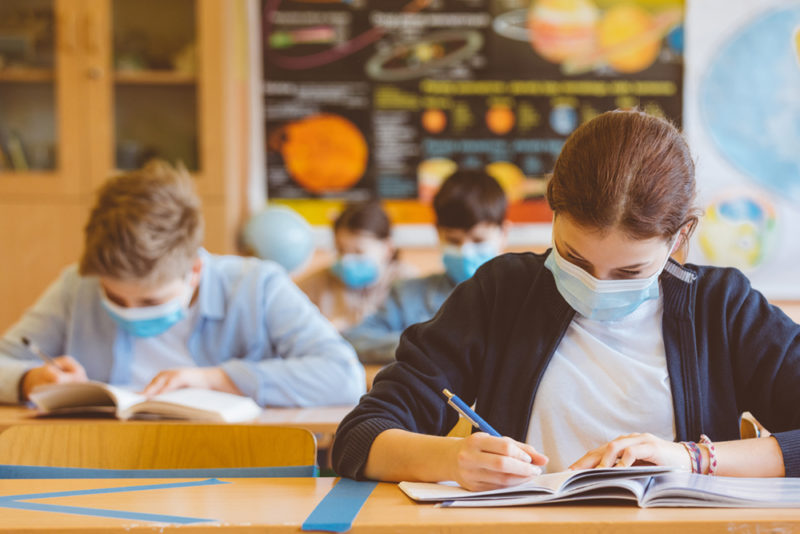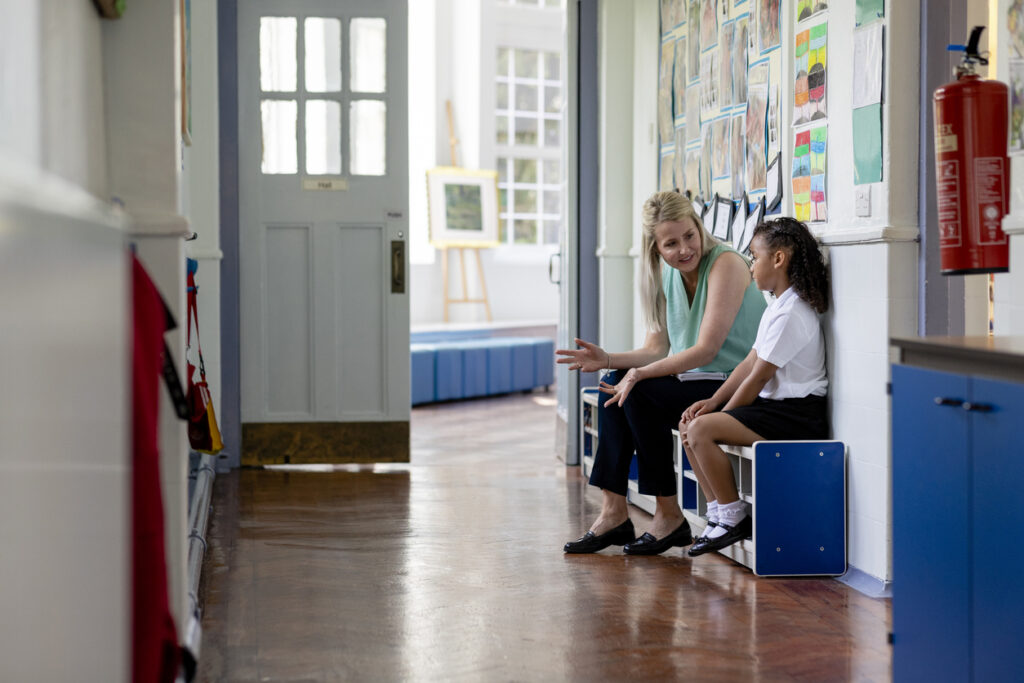
By Oscar Macias
The COVID-19 pandemic has left an indelible mark on the education system, fundamentally altering student behavior, and presenting new challenges for teachers and school administrators. As schools transitioned from remote learning back to in-person instruction, many educators noticed significant changes in student behavior, including increased apathy, disrespect, defiance, and cell phone and social media addiction.
The lingering effects of the pandemic have caused a lack of student attentiveness and focus, leading to significant disruptions in public schools across the nation, according to new data. A recent survey by the National Center for Education Statistics (NCES) found that 26 percent of public school leaders reported a “severe negative impact” on learning due to students’ lack of focus or inattention during the 2023-24 school year. This number jumped to 75 percent when school leaders cited either a “moderate” or “severe” negative impact.
Beyond inattention, school leaders also pointed to other student behaviors that severely hindered learning, including being academically unprepared (21 percent), being disruptive in class (19 percent), not doing individual work (19 percent), being physically unprepared (18 percent), and improper use of electronic devices (16 percent).
The NCES data, collected from over 1,700 public schools nationwide, reveals that 83 percent of school leaders say the pandemic’s lingering effects continue to negatively impact students’ socioemotional development. Addressing issues of student focus and the effectiveness of tutoring will be key to overcoming these pandemic-induced learning setbacks.
This article explores these behavioral shifts and provides evidence-based strategies for addressing these challenges.
The Behavioral Impact of COVID-19 on Students
Increased Apathy and Lack of Motivation: One of the most pervasive changes observed post-pandemic is a rise in student apathy and a lack of motivation. The shift to remote learning disrupted traditional educational routines and often resulted in a disengaged student body. Research from the “Journal of Educational Psychology” highlighted that students exhibited lower levels of intrinsic motivation and a diminished sense of connection to their school community during remote learning periods (Deci & Ryan, 2020).
Heightened Disrespect and Defiance: Many educators have reported an increase in disrespectful and defiant behavior among students since returning to in-person learning. The lack of face-to-face interaction and the over-reliance on virtual communication tools during the pandemic may have weakened students’ social skills and their ability to adhere to classroom norms. According to a study in the “Journal of School Psychology,” students demonstrated more frequent instances of defiant behavior upon their return to traditional classroom settings, likely as a consequence of prolonged social isolation (Smith et al., 2021).
Cell Phone and Social Media Addiction: The pandemic’s reliance on digital devices for remote learning has significantly exacerbated cell phone and social media addiction among students. The “International Journal of Environmental Research and Public Health” reported that screen time among adolescents nearly doubled during the pandemic, leading to increased dependency on digital devices and social media platforms (Elhai et al., 2021). This overexposure to technology has resulted in difficulties in managing screen time and maintaining focus during in-person classes.
Strategies for Addressing Post-Pandemic Student Behavior
To effectively address these behavioral challenges, teachers and school administrators can employ a variety of evidence-based strategies aimed at re-engaging students, rebuilding respectful classroom environments, and mitigating the negative impact of technology addiction.
1. Re-engaging Students and Combatting Apathy
Create a Supportive and Inclusive Classroom Environment: Building a supportive and inclusive classroom environment is critical in re-engaging students and combating apathy. Teachers should prioritize student well-being by fostering a sense of belonging and promoting open communication. Celebrating diversity and encouraging collaboration can help students feel valued and connected to their school community.
Implement Active Learning Strategies: Active learning techniques, such as group work, hands-on activities, and problem-based learning, can significantly enhance student engagement. A meta-analysis published in the “Journal of Educational Psychology” found that active learning methods improved student motivation and academic performance (Freeman et al., 2014). Teachers should incorporate these strategies into their lesson plans to make learning more interactive and engaging.
Set Clear and Achievable Goals: Establishing clear, attainable goals can help students regain their sense of purpose and direction. Teachers should work with students to set personalized academic and behavioral objectives, providing regular feedback and celebrating progress. This approach can help students see the value in their efforts and stay motivated.
Incorporate Social-Emotional Learning (SEL): Integrating SEL into the curriculum can enhance students’ emotional intelligence, resilience, and motivation. Programs focusing on self-awareness, self-management, and relationship skills have been shown to improve academic outcomes and reduce apathy (Durlak et al., 2011). Schools should prioritize SEL initiatives to support students’ overall well-being and academic success.
2. Addressing Disrespect and Defiance
Establish Consistent and Fair Classroom Rules: Clear, consistent rules and consequences are essential for managing classroom behavior. Teachers should involve students in the rule-making process to increase their sense of ownership and accountability. When students understand the rationale behind rules and feel they have a voice in creating them, they are more likely to adhere to them.
Build Positive Teacher-Student Relationships: Strong relationships between teachers and students can mitigate defiant behavior. Teachers should strive to understand each student’s individual needs and backgrounds, showing empathy and respect. Building trust and rapport can create a positive classroom environment where students feel valued and respected.
Use Restorative Practices: Restorative practices, such as conflict resolution circles and restorative conversations, can help address disrespect and defiance by promoting understanding and accountability. Research in the “Journal of Educational and Psychological Consultation” suggests that restorative approaches can reduce behavioral issues and improve school climate (González, 2015). Schools should consider adopting restorative practices to address conflicts and build a supportive community.
Implement Behavior Management Programs: Evidence-based behavior management programs, such as Positive Behavioral Interventions and Supports (PBIS), can provide a structured approach to addressing defiance. PBIS emphasizes positive reinforcement and data-driven decision-making to improve student behavior (Sugai & Horner, 2002). Schools should train staff on PBIS and consistently apply its principles to create a positive and orderly learning environment.
3. Combating Cell Phone and Social Media Addiction
Set Clear Technology Policies: Establishing and enforcing clear policies regarding cell phone use in the classroom can help manage distractions. Teachers should communicate these policies to students and parents, outlining acceptable use and consequences for violations. Consistent enforcement is key to ensuring that students adhere to these rules.
Promote Digital Literacy and Responsibility: Educating students about the impact of excessive screen time and social media use can foster healthier habits. Teachers can incorporate lessons on digital citizenship, emphasizing the importance of balance and self-regulation. Students should understand how to use technology responsibly and the potential consequences of overuse.
Incorporate Technology Mindfully: When integrating technology into the classroom, teachers should use it purposefully to enhance learning rather than as a substitute for meaningful interaction. Interactive educational apps and tools can engage students without contributing to addiction. Teachers should aim to strike a balance between digital and non-digital activities.
Encourage Offline Activities: Promoting offline activities, such as reading, outdoor play, and face-to-face socialization, can help reduce students’ reliance on digital devices. Teachers can create opportunities for students to engage in these activities during and after school. Encouraging a healthy lifestyle that includes physical activity and social interactions can mitigate the negative effects of excessive screen time.
Strategies for School Administrators
School administrators play a crucial role in supporting teachers and creating a positive school climate. They can implement school-wide policies and initiatives to address the behavioral challenges brought about by the pandemic.
1. Providing Professional Development
Offer Training on SEL and Restorative Practices: School administrators should provide professional development opportunities for teachers on SEL and restorative practices. Training on these topics can equip teachers with the skills needed to support students’ emotional and behavioral needs. A study in the “Journal of School Psychology” found that SEL training for teachers led to improved student behavior and academic performance (Brackett et al., 2012).
Promote Collaboration and Peer Support: Encouraging collaboration and peer support among teachers can enhance their ability to address student behavior effectively. Professional learning communities (PLCs) and regular team meetings provide a platform for teachers to share strategies, discuss challenges, and support one another. Research suggests that collaborative professional development improves teaching practices and student outcomes (Vescio et al., 2008).
2. Implementing School-Wide Initiatives
Adopt a Whole-School Approach to SEL: A whole-school approach to SEL involves integrating SEL principles into all aspects of school life, from classroom instruction to extracurricular activities. This approach creates a cohesive and supportive environment where students feel valued and understood. According to a meta-analysis in “Child Development,” whole-school SEL programs significantly improve students’ social skills, behavior, and academic achievement (Durlak et al., 2011).
Develop a Comprehensive Behavior Management Plan: A comprehensive behavior management plan should outline clear expectations for student behavior, consistent consequences for violations, and strategies for positive reinforcement. School administrators should involve teachers, students, and parents in developing and implementing this plan to ensure buy-in and effectiveness. The “Journal of Positive Behavior Interventions” highlights that comprehensive behavior management plans can reduce disciplinary issues and improve school climate (Bradshaw et al., 2010).
Foster a Positive School Climate: Creating a positive school climate involves promoting respect, inclusivity, and a sense of community. School administrators can organize events, assemblies, and activities that celebrate diversity and foster school spirit. A positive school climate has been linked to improved student behavior, higher academic achievement, and reduced absenteeism (Thapa et al., 2013).
3. Addressing Technology Use
Implement School-Wide Technology Policies: School-wide technology policies should address appropriate use of digital devices, both during and outside of classroom time. These policies should be communicated clearly to students, teachers, and parents. Consistent enforcement of these policies can help manage cell phone and social media addiction among students.
Provide Digital Literacy/Digital Citizenship Education: School administrators should ensure that digital literacy/digital citizenship education is part of the curriculum. This education should cover topics such as responsible technology use, online safety, and the impact of screen time on mental health. Educating students on these topics can help them develop healthier relationships with technology.
Create Technology-Free Zones and Times: Exploring the restriction of smart phone/smart watch use on school grounds based on grade level spans. This can help create a more focused and interactive learning environment. Implementing technology-free zones and times within the school encourages students to engage in face-to-face interactions and offline activities. For example, cafeterias, libraries, and outdoor spaces can be designated as technology-free zones. Furthermore, setting specific times during the school day for technology-free activities can promote a healthier balance between screen time and personal interaction. Adjustments to these policies can be tailored to suit different grade spans, ensuring age-appropriate guidelines that foster positive social and educational outcomes.
Conclusion
The COVID-19 pandemic has undeniably altered student behavior, presenting new challenges for teachers and school administrators. However, by understanding these changes and implementing evidence-based strategies, educators can effectively address issues of apathy, disrespect, defiance and technology addiction. Creating supportive classroom environments, fostering positive relationships, promoting balanced technology use, and implementing school-wide initiatives are crucial steps in helping students readjust and thrive in the post-pandemic educational landscape.
By prioritizing these approaches, teachers and school administrators can support their students’ academic and emotional well-being, paving the way for a more resilient and engaged generation of learners. The road to recovery may be challenging, but with concerted effort and collaboration, the education community can overcome these obstacles and emerge stronger than ever.
Oscar Macias, Ed. D., has served for over 25 years in public education. He was a campus supervisor, a classroom teacher, high school assistant principal, a middle school principal, and a Director of Education of Equity, Access, and Family Engagement. He is currently the Interim Assistant Superintendent of Instructional Services for the Burbank Unified School District. He is a proud member, supporter, and advocate of ACSA.
References
Bradshaw, C. P., Mitchell, M. M., & Leaf, P. J. (2010). Examining the effects of schoolwide positive behavioral interventions and supports on student outcomes: Results from a randomized controlled effectiveness trial in elementary schools. Journal of Positive Behavior Interventions, 12(3), 133-148.
Brackett, M. A., Reyes, M. R., Rivers, S. E., Elbertson, N. A., & Salovey, P. (2012). Assessing teachers’ beliefs about social and emotional learning. Journal of School Psychology, 50(1), 153-174.
Deci, E. L., & Ryan, R. M. (2020). Intrinsic motivation and self-determination in human behavior. Journal of Educational Psychology, 82(1), 13-22.
Durlak, J. A., Weissberg, R. P., Dymnicki, A. B., Taylor, R. D., & Schellinger, K. B. (2011). The impact of enhancing students’ social and emotional learning: A meta-analysis of school-based universal interventions. Child Development, 82(1), 405-432.
Elhai, J. D., Yang, H., & Montag, C. (2021). COVID-19 pandemic and mental health: Examining screen time and the effect on mood and well-being. International Journal of Environmental Research and Public Health, 18(12), 6613.
Freeman, S., Eddy, S. L., McDonough, M., Smith, M. K., Okoroafor, N., Jordt, H., & Wenderoth, M. P. (2014). Active learning increases student performance in science, engineering, and mathematics. Journal of Educational Psychology, 306(4), 841-883.
González, T. (2015). Social-emotional learning, restorative practices, and positive behavioral interventions and supports. Journal of Educational and Psychological Consultation, 25(1), 1-30.
Smith, A. L., Fisher, S., & Frey, N. (2021). The impact of social isolation on student behavior: A pandemic perspective. Journal of School Psychology, 59(3), 215-233.
Sugai, G., & Horner, R. H. (2002). The evolution of discipline practices: School-wide positive behavior supports. Child & Family Behavior Therapy, 24(1-2), 23-50.
Thapa, A., Cohen, J., Guffey, S., & Higgins-D’Alessandro, A. (2013). A review of school climate research. Review of Educational Research, 83(3), 357-385.
Vescio, V., Ross, D., & Adams, A. (2008). A review of research on the impact of professional learning communities on teaching practice and student learning. Teaching and Teacher Education, 24(1), 80-91.





